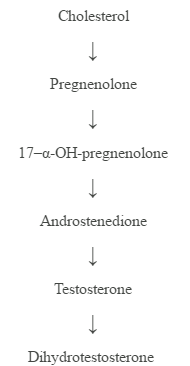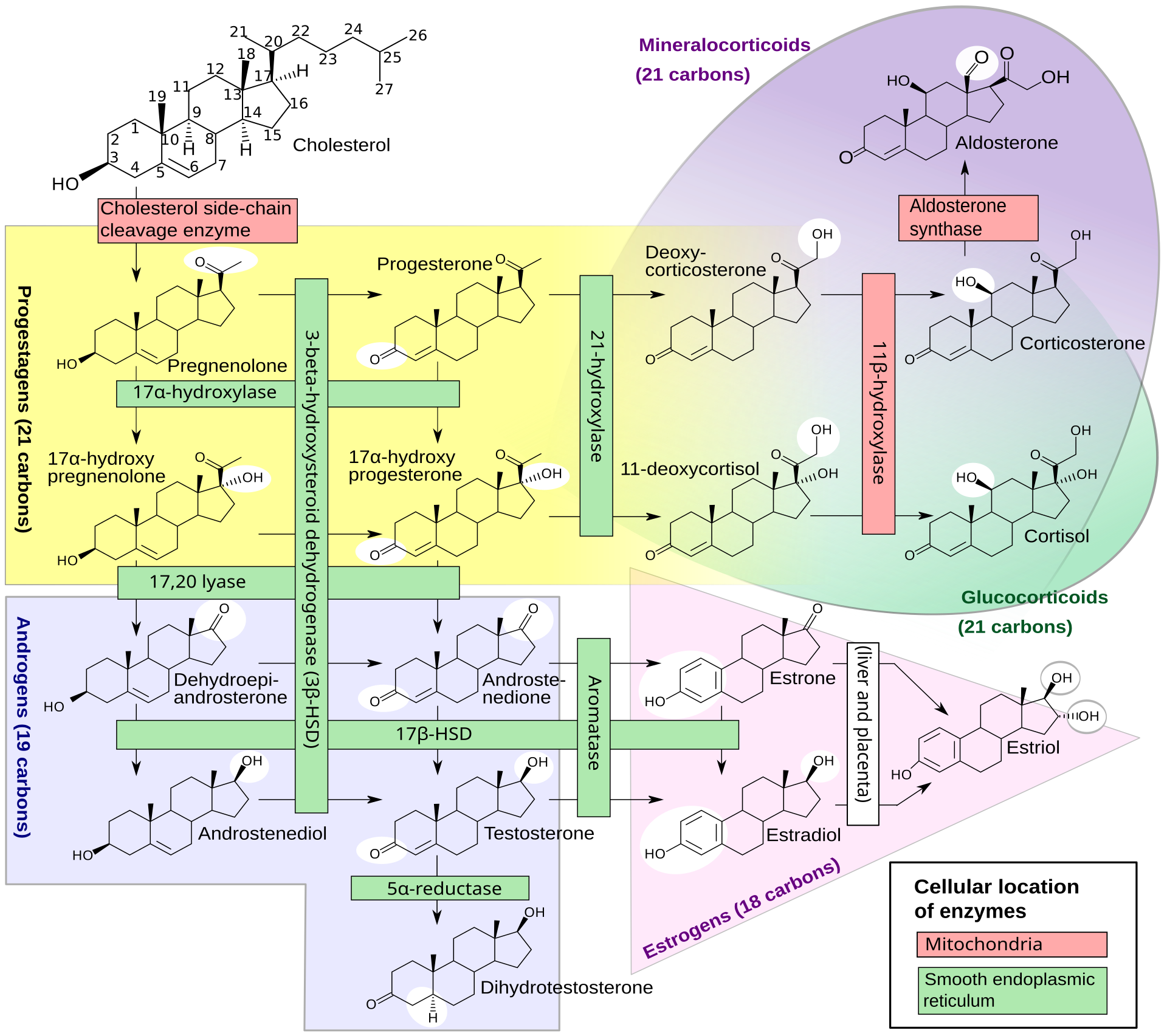6
663697
If negative feedback is a regulatory mechanism in the dihydrotestosterone biosynthetic pathway, elevated levels of androstenedione could diminish the formation of which of the following?
A. Cholesterol
B. 17-α-OH-pregnenolone Correct Answer
Why wouldn't an increase in androstenedione inhibit the formation of cholesterol instead of pregnenolone? Wouldn't it be more efficient to inhibit the loop from the beginning precursor rather than an intermediary?

A. Cholesterol
B. 17-α-OH-pregnenolone Correct Answer
Why wouldn't an increase in androstenedione inhibit the formation of cholesterol instead of pregnenolone? Wouldn't it be more efficient to inhibit the loop from the beginning precursor rather than an intermediary?


